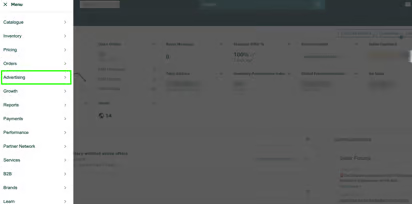In the constantly growing environment of Amazon, one of the most valuable assets is exposure. Amazon’s PPC marketing strategy for sellers is highly effective and has a strong infrastructure that enables products to be marketed to the correct consumer at the right time. This post is focused on the definition of Amazon PPC, its functioning, the indicators that can be used to measure its effectiveness, and some key tips for using it effectively to achieve the highest possible returns.
What is Amazon PPC?
Amazon PPC is a pay-per-click business model in which the sellers offer certain amounts for the keywords so that their products can be marketed to potential consumers. Ads are placed on high visibility areas including the search results page and the product detail page, where shoppers have a view of them. Sellers only pay when a user clicks on their ad, making this a cost-effective way to drive targeted traffic and increase sales.
Whether you are a new seller trying to establish your brand or a seasoned seller looking to boost your product’s visibility, Amazon PPC is a cornerstone strategy in modern e-commerce.
How the Amazon PPC Works
The Amazon PPC also decides which advertisements must be brought to the customer’s attention in response to their search queries. Here’s a breakdown of the process:
Search Initiation:
A shopper searches for a product using specific keywords, such as “stainless steel water bottle.”

Relevance Filtering:
Advertisers compete to be able to post their advertisements. It also embraces the maximum that they are willing to spend in a click on the ad they intend to place.
Auction Bidding:
Sellers bid for the opportunity to show their ad. The bid represents the maximum amount they’re willing to pay for a click on their ad.
Placement and Cost:
Ads are placed at the most strategic positions in a website including the right top corner of the Search Pages Result as well as the Product Detail Pages to give the ad maximum visibility to the buyer. Sellers get to pay for the ad only when there is a click from the shopping consumer. Cost per click is defined by the second price in the auction adding ₹ 0.01 to it. It ensures that the sellers pay the bare minimum needed to outdo other competitors and hence keep the cost of advertising as optimized as possible.
This system guarantees that the customer is provided with only competitive and relevant advertisements to improve their shopping experience while at the same time giving the sellers a fair chance at promoting their products.
Why is Amazon PPC Important for Sellers?
Amazon PPC undeniably provides immense benefits to sellers regarding visibility, traffic, and sales. Let’s delve deeper into its significance:
1. Enhanced Visibility
Amazon’s marketplace is a crowded environment with millions of items in competition with each other. According to research, 70% of Amazon customers do not scroll past the first page of a search. In some cases, your product is not viewable when people try to search for relevant items organically; but with PPC ads, it is placed right in front of the potential buyers.
2. High Purchase Intent
This is different from other ad platforms where the user might be absent-minded while browsing to stumble on the ad; these customers are actively seeking a product on Amazon. PPC campaigns exploit this intent hence there being better conversion rates and much higher returns on investment.
3. Brand Awareness and Loyalty
PPC advertisements are not only meant for direct and instant sales but also contribute to the growth of brand awareness. Many people will see your ads numerous times and always associate your brand with a particular product category.
4. Organic Rank Improvement
PPC can generate good sales and the selected product gets a good rank on the organic search results. This makes Amazon-specific algorithms push products with high velocity, making them visible and increasing their sales in scope.
Amazon PPC Ad Types
There are three types of PPC ads that Amazon offers, and each serves a specific purpose for sellers. Let’s explore these options in detail:
a. Sponsored products: –
Sponsored Products Ads are the most popular ad type on Amazon. These ads allow brands to promote specific products in search results and product detail pages. Sponsored Products ads are displayed alongside organic search results, and are marked with “”. These ads can be keyword-targeted. They are activated by keywords shoppers search on Amazon. Brands can set bids and then pay customers when they click on their ads.

Key Features:
Automatic and Manual Targeting:
Select keyword targeting; either let Amazon select and bid on keywords automatically based on an algorithm or select particular keywords for greater control.
High Visibility:
They appear on the top of the search Network above and below the organic search results and within the product listing.
Use Cases:
Increase awareness of a new product in the market.
Suggest products that are sold at a specific period or products that are in high demand.
Drive higher demand for low-performing products.
Example:
An organic skincare product-selling company can use Sponsored Product Ads to advertise its listing to customers who search for a particular product such as natural face cream.
b. Sponsored brands: –
Sponsored brands can promote multiple products and their brand in one ad. These ads are placed at the top of search results and marked with the brand logo. Sponsored brand ads include a headline, logo and custom image. You can also display up to three products. These ads can also be keyword-targeted to drive traffic to the brand’s Amazon store and product detail pages.

Key Features:
Customizable Creative Elements: Include a brand logo and tagline.
Prominent Placement: Banner ads are displayed above the search results and take a certain amount of the shoppers’ attention on the phase they are in.
Multiple Product Promotion: It allows highlighting up to three products in a single advertisement.
Ad Formats:
Product Collection: Gives shoppers direct links to the intended products.
Store Spotlight: Links to the Amazon store; in this case, the customers are able to browse through all the products.
Video Ads: People pay more attention to videos, which makes them particularly effective and generally leads to higher conversion rates.
Example: A fashion brand can use Sponsored Brand Ads to promote a collection of summer dresses, highlighting the brand name and unique features.
c. Sponsored Brand Videos: –
Sponsored Brands Video is an ad format on Amazon that allows brands to showcase their products in video creative ad format. This means that brands can add a video component to their Sponsored Brands ad, providing an additional layer of engagement and interactivity.

d. Sponsored Display: –
Sponsored Display Ads on Amazon allow brands to promote products and brands on Amazon. These ads can be displayed in a variety of formats including product images, custom headlines and logos. They are intended to grab the attention of potential customers and drive them to click on the ad to visit the product detail page and brand store.

Key Features
Remarketing: Remind the shoppers who gave your product a look, but walked away without buying.
Broad Reach: Advertisements are placed on Amazon’s internal areas as well as external areas such as on Facebook.
Audience Targeting: The ability to target certain consumers by their browsing habits.
Use Cases:
Target users who have already been interested in similar products.
Specific users who had added items to the cart but did not complete the purchase or users who viewed the listed item but did not proceed to purchase.
Example: An electronics brand could use Sponsored Display Ads to target customers who viewed a laptop but didn’t complete the purchase, offering a discount or highlighting its key features.
Understanding Key Amazon PPC Metrics
To optimize your campaigns, monitor these critical metrics:
Advertising Cost of Sales (ACoS):
Measures ad spend efficiency.

Lower ACoS indicates better campaign profitability.
Click-Through Rate (CTR):
Reflects how compelling your ad is by comparing clicks to impressions.

Cost Per Click (CPC):
The actual amount paid per ad click. Keep this value within your profitability range.
Impressions:
Tracks how often your ad is displayed. While high impressions indicate visibility, they must translate into clicks and sales for success.
Attributed Sales:
Revenue generated from ad clicks, helping measure the campaign’s direct impact on sales.
How to Set Up an Amazon PPC Campaign
Launching your first campaign involves these simple steps:
Access Seller Central:
Go to the Advertising tab and select “Campaign Manager.”

Choose Campaign Type:
Pick Sponsored Products, Brands, or Display ads based on your goals.

Define Objectives:
Clarify whether you aim to boost sales, visibility, or brand awareness.
Set Budgets and Bids:
Allocate a daily budget and maximum CPC to control spending.
Select Targeting:
Opt for automatic targeting to let Amazon handle keywords or manual targeting for greater control.

Best Practices for Effective Amazon PPC Campaigns
1. Conduct Thorough Keyword Research
You can search the keywords using tools like Helium 10, Jungle Scout, or Amazon keyword planner to generate the most performing keywords. Always update the list depending on the campaign’s outcome.
2. Optimize Product Listings
Always make sure you have well-written listings with good images, appealing titles, and bullet points. A great listing enhances the effectiveness of the PPC ad.
3. Utilize Negative Keywords
Opt out keywords that are not super relevant or yield low conversion rates to be able to reduce ad costs and increase relevancy.
4. Experiment with Ad Types
Try various ad placements (Sponsored Products, Brands, Display & Retargeting) to find out which gives the highest conversion rate for your products.
5. Leverage Analytics
Constantly review your campaign KPI. Filter the best-performing keywords, modify bids and distribute budgets that will guarantee the best ROI.
6. Bid Strategically
It is wise to bid average rates when commencing the campaign and then the bids should be progressively raised for better-performing keywords. To increase your keyword ROI, it is recommended that you stop bidding on specific non-converting keywords.
Conclusion: Amazon PPC is an essential tool for sellers aiming to succeed in the competitive e-commerce environment. By understanding its mechanics, ad types, and metrics, sellers can create campaigns that drive traffic, boost sales, and enhance brand visibility.
Additional Reading
For more insights into optimizing your Amazon business, check out:

